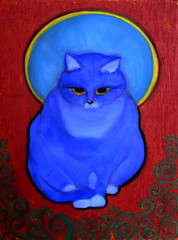
When I was in the 9th grade, I won the "Adele Swenson Award for Excellence in Home Economics." I'm not sure what form Home Ec comes in these days, if at all--but when I took it, the class was all girls except for the two guys with long hair and khaki jackets with obscenities engraved in black marker, who wanted to be surrounded by girls and extra calories to assuage the inevitable munchies when they got back from smoking pot behind the hockey rink.
I was the girl who had a talent for reading pattern instructions. I would read anything--reading was my drug for the pain of junior high--and this compulsion came in handy in Home Ec. Most of the other girls didn't read the instruction sheet, or didn't understand it, and would ask the teacher what to do next. This puzzled me--asking a question was not something I ever thought about. This is the irony that I became a Reference Librarian, without ever having asked a Librarian a question. I expected myself to know before knowing, to know everything in advance.
In Home Ec, the feeling of power that came from comprehending the instructions and answering other girls' questions inspired me to tell my parents I wanted to become a Home Economics teacher, much to their apparent horror. This was definitely "not to my potential"--yes, one could major in Home Ec at the University, but there was an unspoken belief that cooking and sewing were not truly academic subjects--but women's work.
The confounding factor though for my actually going through with this desire, was that sewing made me cry. All manner of emotional pain couldn't bring the tears, but a crooked seam, or a ratty looking bobbin thread could bring me to sobs of frustration. I loved the big pattern books on the tilted tables. I loved fabric--the texture and colors. When our teacher had us learn different types of weaves, glue scraps of each kind into a notebook, I was in heaven. I loved that weaves had names like herringbone, and that they were identifiable, that I had this knowledge. I loved notions like zippers and buttons and thread. I loved the smell of sewing machine oil and the line drawings on newsprint illustrating each step of construction. But actually guiding the needle tested the limits of my endurance--I wanted it exactly right. And I saw flaws that no one else did, which made me well acquainted with my seam ripper(which in spite of it's association with imperfection, was still a lovely notion).
For years I convinced myself that I actually did like to sew. I bought a sewing machine when I was 29, in a rush of nostalgia. I made ragdolls for my friends children--it was incredible to see these children clinging to the doll I had made, loving the doll, imbuing it with life--but sewing still made me cry. I felt guilty when I started projects and never finished them, as happened more and more. I felt I *should* want to to sew, that the Adele Swenson award must have meant something about my destiny. I still have the plaque--with my name engraved on it, a shield shaped thing with mock woodgrain finish, and a thin brass plate. I wish I knew something about Adele--why there was an award in her honor. And I still wonder why I won--it feels very much like I won for compliance, for following instructions--at the time I was wondering if they had made a mistake, since I spent so much time ripping things apart, surely that meant I was defective in some way.
I went through a bout of wanting to make quilts a few years ago--still circling back to the sewing machine that tormented me so. I finally had the revelation that I did not like sewing--I loved quilts, but to actually make one was not a possibility. Instead my husband decided he wanted to continue his grandmother's legacy and learn to quilt and I most enthusiastically gave him my sewing machine. He picked up the skill with phenomenal speed--his keen spatial abilities allowing him to align many seams with precision. He'd worked in his father's drafting business as a teenager. And I discovered that I still loved quilts--and made them out of paper. I made Christmas cards in a log cabin design with magazine papers in red and green--and it was a delight. And then when I started mosaicing, I felt compelled to make quilt designs in glass--and this was even more delightful! The photo above is of a log cabin design, in red and black glass, 1 foot square, with way too many pieces, but it didn't bring me to tears. I've had people comment on how it must take forever to cut all those little rectangles--and yes it does take a long time--but I love the process. This is what happens when you discover your medium. Not that I don't ever get frustrated, but the joy outweighs it.
The impulse to make something beautiful can be incarnated in many forms. *Women's work* has been a phrase used in contempt in history--and yet what beauty has arisen from it--needlework, sewing, quilting. A quilt is often the only legacy from women in our family histories--their biography in cloth, and I hope to write mine in glass.

 s! Here I am by the
s! Here I am by the 





